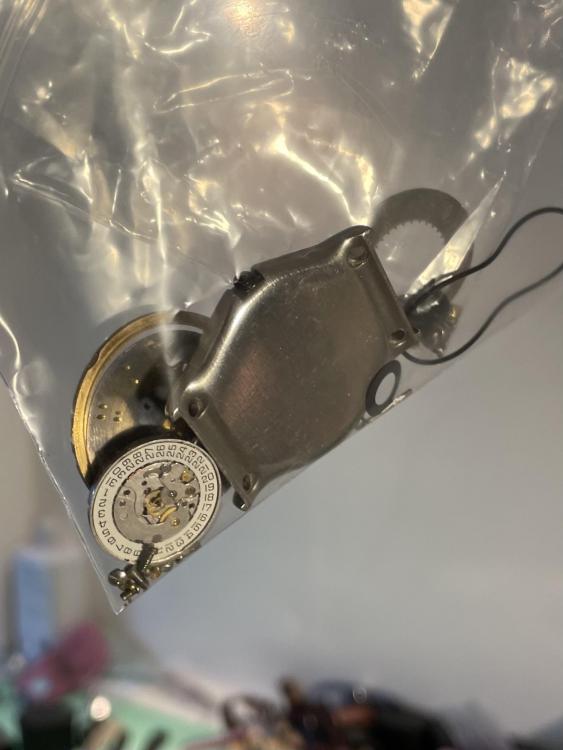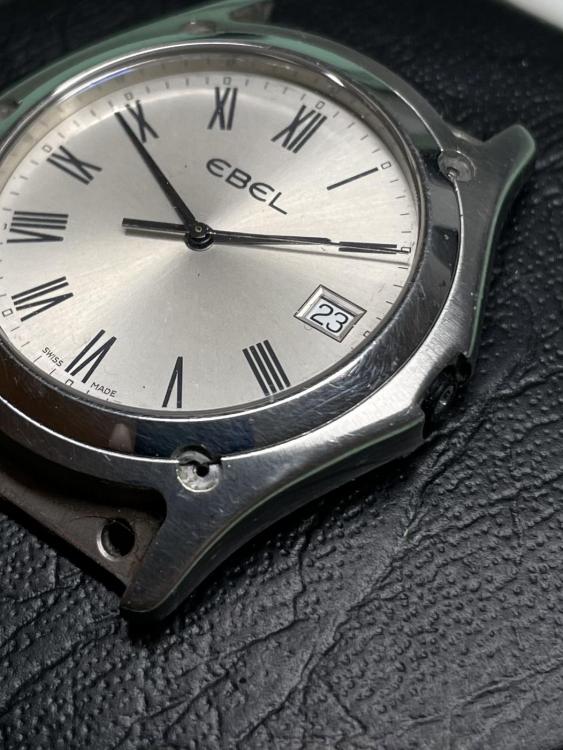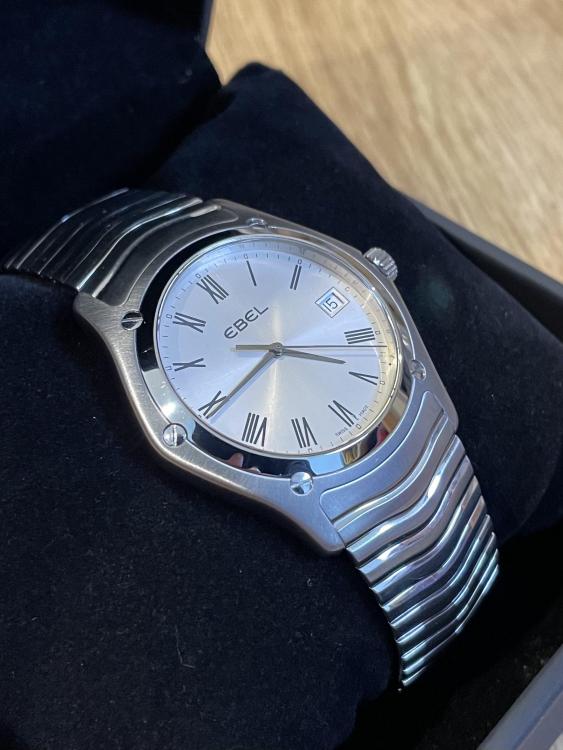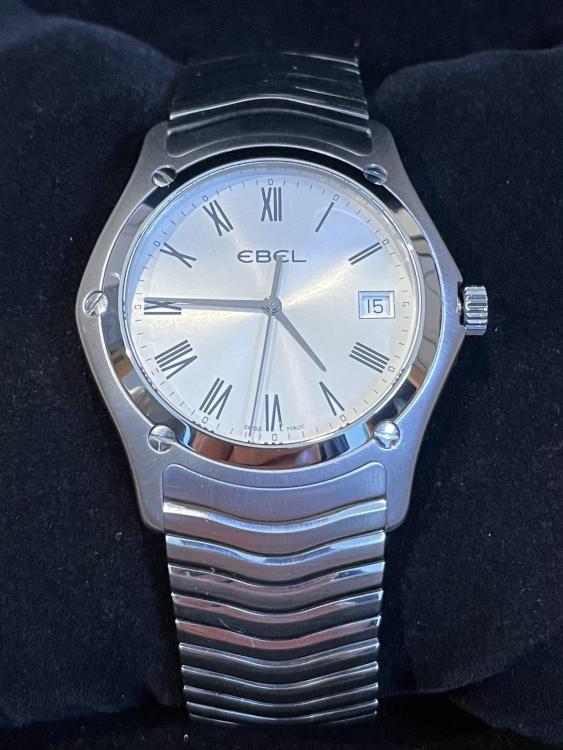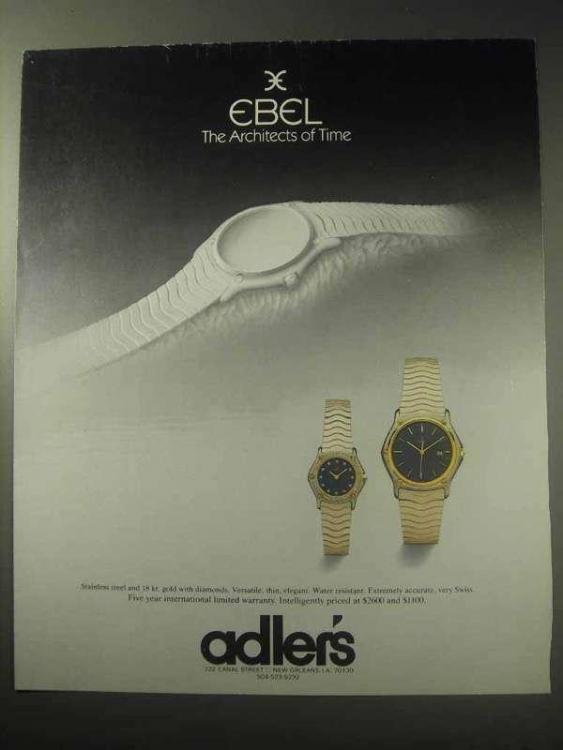Leaderboard
Popular Content
Showing content with the highest reputation on 11/23/21 in all areas
-
I recently received a bag of broken watch bits in the post with a note attached. The note read, “see what you can do with this lot”. I wasn’t very hopeful but it turned out there was at least one complete watch in there. After spending time piecing everything together I realised a new quartz movement would be required. An ETA 64111 seemed to fit all the measurements and one was ordered. After a lot of dial cleaning, hand straightening, and case/ bracelet polishing I ended up with a complete working watch.3 points
-
Usually they're not separate brass bushings. If you look at a lot of watches they'll have an oil sink they might look like their separate but they're not. As far as manufacturing goes you can drill a hole for a pivot or a larger hole for a jewel. But then you still have to push the julienne or mount it somehow it's additional steps. Then even at millions of jewels purchased they still have a cost which is more than a brass bushing there's more steps involved in manufacturing and putting it on the plate. Then I still just can't quite think of any place where seen separate brass bushings? I don't suppose you have an example photograph? One of the disadvantages of jewels? If you are importing watches in the United States not sure where that started but ended in the mid-60s we had tariffs to protect the watch industry. That meant that any watch imported in from anywhere almost would have an additional charge or possibly additional charges. Like the number of jewels bumped up the price it's why typically watches on the backside will say unregulated because regulated bumped up the price. There were some minor exceptions to this when the watch companies there were still in business in the late 50s and 60s set up manufacturing facilities on I think the virgin islands so watches were imported their finished by the companies are brought into the US as their own and that I think aloud the watch companies to avoid the tariffs on the movements. Otherwise the consumers were screwed because we had to pay a little more money for Swiss watches or anything from out of the country.2 points
-
In general no it is not essential but most pros use it always, certainly for some parts it is a must. For example when I serviced my Rolex 3135 it worked great for a while but the auto side stopped functioning correctly. I stripped the auto parts re cleaned and treated with “fixodrop” and it has worked perfectly for the last 5 years.2 points
-
A & N Paris from what I have found out it looks like A & N bought movements from Paris and assembled them in London. The number is just a movement number. The second French timepiece looks like 1882 in the round stamp. As you look at the back plate the 3 numbers on the left is the movement number and the original pendulum would have the same numbers stamped on the pendulum bob. The 3 numbers on the right are the length the pendulum should be, it is in french inches. The Ansonia is just a typical common strike movement. William L Gilbert clock is the interesting one out of the American clocks. It has full plates which you don't find in most American movements. It is in the style of English and German strikes, the springs are in barrels which with the American clocks they tend to be the open type.1 point
-
Hello Mark. I'm completely new to you, your site, and a complete novice as well. Not enrolled yet. I like the content of your site and the friendliness of the members. I ran a site of my own for many years and installed Adsense. Members, be aware that Mark receives and income from the 'clicking' of the adverts. Be very careful about causing Mark a problem. Don't click every advert each time you visit. If there is something that may interest you, by all means 'click'. Adsense keep a record of 'Clicks'. Some of my members tried to help and give me more income. They 'clicked' every advert, every time a visit. Asdsense stopped my 'click' income for 3 month. When it came back on, members did 'click' each visit, but limited 'clicks' allowed the income to grow. Let's help Mark. I know the cost of running a site. Regards to all Keep well. keep safe Ross1 point
-
The search box top right works OK for basic searches, for more searching a sentence use Google site search. BTW, we have a dedicated section where it's considered polite for new members to introduce themselves.1 point
-
I did also recently find a table for the differences in friction between steel/brass and steel/ruby, oiled/un-oiled. There isn't a huge difference.1 point
-
One of the things I hate doing is hijacking discussions so this would be an interesting discussion on its own. The reason I ask is in shops repairing watches when the watch is running their placed on the timing machine and their stable. So in other words shops don't set their watches aside and let them run for 24 hours before regulating typically. They may check them after 24 hours to fine-tune perhaps but they're usually stable really fast. The only exception to this is if it's not an automatic you wind the watch up nice and tight and immediately place it on the timing machine there is a stabilization from that. Which is why the watch companies recommend depending upon who you look at anywhere from 15 minutes to an hour to stabilize. But that's mainly because you get too much power especially on a manual wind that last little click is not desirable. If you have a watch to play with You to try an experiment like using 9010 on the escapement. As it's an oil and not a grease and it will work on the escapement. As nice as 9415 is it supposed to be applied in really small quantities typically. If you get too much you can actually lose amplitude. If you look at the Omega lubrication guide they list really apply it under a microscope because they're worried about that. So if you have too much it can be an issue. The other thing to try is putting it on running the watch for little bit taking the fork out rinsing it off such dry putting it back in and you should get transfer from the escape wheel back to the fork and see if that changes anything. Microphone off1 point
-
I think it's purely dollars and cents, because I can't see any advantage of using brass over rubies. But I've only seen brass jewels in pocket watches and a couple of cheap vintage movements. If you do come across any worn holes in the mainplates or bridges, rebushing with brass is definitely easier and cheaper than jewelling it with a ruby. I can turn a brass rod into any size bush easily, but I have about 1000 scrap jewels bought from eBay and I rarely find a suitable jewel for the one I wish to replace. And buying individual size Seitz jewels can be quite costly.1 point
-
1 point
-
Is this one of those times where you are so blinded by messing something up, that you can't see the obvious solution?! Bl**dy hell Marc, you might be right! Ill have a look and reply...1 point
-
Rather than start all over again can you not just remove the outer half of the stem from the crown, shorten by 0.5mm, and the reinstal? Cracking resurrection by the way1 point
-
Im really not happy with how the crown sits. The original crown had the stem broken off in it (but not flush, quite a way down inside), and I didn't want to wait ages for alum to work. Also being a closed back the watch had a split stem. I converted the standard ETA 64111 stem in to a split stem, by shaping a male end under the microscope with some small files. I purchased the female end from cousins and screwed this into a replacement crown. After spending ages with the files getting a clean union between the male and female ends, it turns out my measurements were 1/2 a mm out! Im sure I will sulk over this overnight and then buy a new stem tomorrow and start all over again. This time with a 0.5mm shorter initial cut!1 point
-
Hi All I am new to this game of Horology, but being an engineer of veteran vintage and classic cars, I find it fascinating and relaxing refurbishing old time pieces. I find machining no problem with manual and CNC machines at my disposal, although refurbishing the Boley watchmakers lathe was interesting and I am still willing to learn new techniques of the watchmaker and his tools. I am currently working on an Omega pocket watch of circa 19101 point
-
Hi there, Being brand spanking new at my hobby, I began by supporting the Swiss economy by buying some of their tools and utilized other sellers as well whenever possible. I cleaned out a vacant room and established a work area. I soon realized the value of a good work light and was thankful I bought the tools I did. My first watch repair efforts are still in progress, having bought by lot a group of junk, non-working movements for cheap. Those movements were the only cheap things I bought. These tools are expensive after awhile. The only watches I've worked on are old pocket watches. My first was a Waltham which I got working, at least to where it would tick for about 30 seconds. I'll go back to it another time to see if I can get anything more out of it. The second one was an 1889 Illinois which had a broken pallet stone and a bent safety pin. Failure on that one. The most recent was a 1904 Elgin with a 289 movement, not running. I dis-assembled it, the Elgin, and did not take pics of that process, thinking I could manage on my own. More confidence than smarts it turned out. After cleaning by hand with alcohol I put the parts in an ultrasonic with L&R cleaning solution, new. I was dismayed to see a jelly-like substance on the parts and floating around. Verdigris? I then cleaned in the matching cleaning solution followed by dipping in alcohol. The alcohol removed the material, whatever that was. While cleaning I inspected all the parts and found that a couple of train pivots were damaged and someone dropped a glob of something, maybe shellac, on the top of the entry pallet. But I soldiered on. Re-assembly was difficult as I should have taken pics. Lesson learned. I also thought I was clever by installing the center wheel first as it's secured by the barrel bridge. Well on this watch it's better to put the wheels in from the escape wheel to the center wheel and then install the barrel and its bridge. This took more time than it should have. I hadn't messed with the mainspring because I just wanted the watch to work, then if it did I'd go back to it. But, no power was coming from the spring and after spending, again, more time than necessary I realized someone had installed the arbor upside down. Lesson learned there too. I had a heck of a time trying to figure out how the "floating arm" could stay engaged with the ratchet wheel. This floating arm is a bar which has the crown wheel, per se, in the middle with an intermediate wheel on either side, and these wheels engage with the ratchet or minute wheel, respectively. I had no crown or stem so I had to use a bench tool with a pin vise to try to keep the thing engaged which was tricky for me. I finally got the thing together. Oh, and the mainspring was all bent up at the terminal where it meets the arbor. Didn't break fortunately. Gave it a little wind, dropped in the balance, and yes, it works! Not well, really badly actually, but it runs for a few hours. I think the other end of the mainspring may not be seated in the barrel properly or is broken as I think that's why I don't get the power I should. I'm not going to spend any money to find out, I'm just happy it works. Well, I'm content, hence the use in the title. I'm not having parts fly away anymore, or at least they fall on my desk now rather than ping around the room until being sucked into a black hole. I wanted to share my trials and modest success with you. On to the next junk movement for me. Thanks for reading. BTW, I call them junk movements because that's how they were described to me when I bought them off ebay. To me they are really beautiful works of art and science. The engineering and craftsmanship which went into these old watches is spectacular and it does in fact please me to get one ticking when it wasn't before, for who knows how long.1 point


